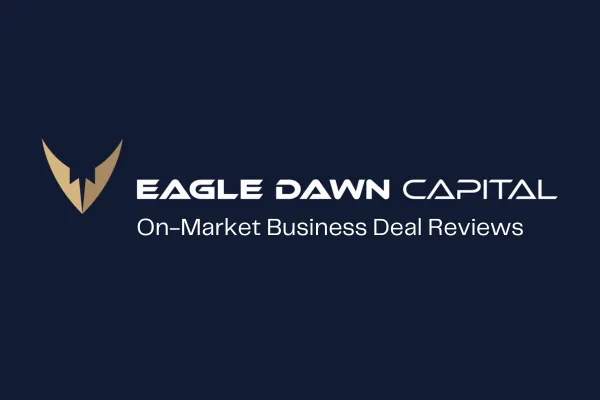
Regional Pest Control Company
This case study explores the acquisition opportunity and structuring model for a regional pest control company focused on residential and light commercial customers. The company offers general pest control, termite treatments, mosquito spraying, rodent exclusion, and seasonal maintenance plans. Operating across five counties in a high-growth suburban corridor, the business has over 3,500 active customers and a well-established brand with nearly two decades of goodwill.
Annual revenue is $4.3 million with adjusted EBITDA of $826,000. Approximately 70% of revenue is generated through recurring subscription-based services billed monthly or quarterly. The remainder comes from one-time jobs, termite remediation, and seasonal services. Route density is optimized with five daily service zones, each hitting 40–60 stops per technician per week, maximizing fuel and labor efficiency.
This business is highly attractive for SBA 7(a) financing due to its steady recurring revenue, route-based model, low CapEx requirements, and minimal customer concentration risk. Strategic growth opportunities include densifying current routes, adding premium tiered plans, expanding into wildlife control, and acquiring mom-and-pop competitors.
Proposed SBA 7(a) Deal Structure
Given the healthy EBITDA and recurring cash flow, a standard SBA structure can support high leverage:
Purchase Price: $3.3 million (4.0x EBITDA)
SBA Loan: $2.475 million (75%)
Buyer Equity Injection: $330,000 (10%)
Seller Financing (Subordinated): $495,000 (15%) with 6-year amortization, 12-month interest-only
Deal terms should include:
20% clawback on seller note if active customer base drops by more than 10% within 6 months
Seller earns a bonus if buyer adds 500+ new recurring customers in the first 12 months
Seller remains for 9-month transition with technician ride-alongs, vendor relationships, and marketing oversight
Customer and Revenue Profile
Customer segmentation:
Residential (single-family and townhomes): 82%
Light commercial (restaurants, offices, retail centers): 18%
Service breakdown:
General pest control (quarterly, monthly): $2.25M
Termite monitoring and treatment: $770K
Mosquito control (seasonal packages): $560K
Rodent exclusion and attic treatment: $380K
One-time treatments (move-ins, infestations): $340K
Subscription revenue comes from 1,900+ monthly clients and another 1,600 on quarterly or seasonal packages. Contracts are auto-renewing and billed via card on file or ACH.
Top 50 customers comprise just 9% of revenue. No single customer accounts for more than 1.5%.
Field Operations and Route Management
Daily operations:
6 pest control technicians, each assigned a service zone
1 termite specialist
1 wildlife technician (dual-role pest + rodent)
Routes optimized with PestRoutes software and Google Maps integrations
Technicians perform 8–12 stops/day depending on density and service complexity
Fleet:
8 service vehicles (FMV ~$320K, owned)
Branded, stocked with sprayers, bait traps, ladders, PPE, and digital tablets
Technicians are W-2, licensed under state pest applicator regulations, and certified for rodent, termite, and general pest lines.
Buyer should maintain service coverage continuity and incentivize retention by:
Offering $5K bonuses for key techs at 12-month employment mark post-close
Launching “tech of the month” reward program tied to client reviews and completion rate
Cross-training mosquito and termite roles to reduce hiring burden
Facility and Equipment
Operations are run from a leased 4,500 sq ft warehouse with:
Chemical storage room (hazmat compliant)
Office and customer service hub
Break room and dispatch terminal
Vehicle parking lot with gated entry
Lease: $3,950/month, 2 years remaining with renewal option.
CapEx forecast:
Replace 2 older vehicles in Year 1: $70K
Upgrade scheduling tablets and route tracking tools: $15K
Purchase additional exclusion equipment for attic insulation services: $10K
Sales and Marketing
Lead generation sources:
Google Ads / LSA
SEO blog articles and pest control guides
3,500+ customer email list
Cross-promotion with real estate agents, property managers, and HOAs
4.9-star average on Google with 400+ reviews
Monthly marketing spend: ~$7,800
Post-close growth levers:
Launch “Gold” and “Platinum” subscription plans with add-ons like crawlspace cleaning, attic fans, and rodent seal-out
Create realtor referral incentive for pre-closing pest inspections
Acquire 1–2 small independents in adjacent zip codes and fold into existing routes
Introduce online booking and automated quote tools via upgraded website
Financial Performance Summary
Revenue: $4.3M
COGS (labor, chemicals, fuel): $2.28M
Gross Profit: $2.02M
SG&A: $1.194M
Adjusted EBITDA: $826K (19.2%)
Gross margins:
Pest control: 52–58%
Termite: 45%
Mosquito: 60% (high-margin seasonal)
Rodent/wildlife: 50%
Revenue has grown at 7–9% CAGR over past 3 years with >90% client retention YoY.
Accounts receivable under control; 93% of clients on auto-pay. AR balance typically under 14 days of revenue.
Legal and Risk Compliance
Licensed with state agricultural pest board
All technicians background checked and trained for pesticide safety
OSHA-compliant fleet safety and chemical storage logs maintained
$2M general liability, $1M auto, $1M umbrella, $1M workers comp
No litigation history, EPA fines, or active complaints.
Buyers should verify all licensing is transferable and confirm regulatory compliance in neighboring counties for expansion.
Working Capital and Transition Needs
Payroll float: $90K–$100K
Vehicle replacements: $70K (may lease)
CRM/website upgrade: $15K
Seller consulting: $25K–$35K
Sales commission budget for new plan rollout: $12K
Ideal Buyer Profiles
Blue-collar route business aggregators (HVAC, plumbing, lawn care)
Franchise operators seeking a proprietary brand foundation
First-time buyers with strong field management skills
Home service entrepreneurs looking for MRR-focused operations
Post-Close Execution Plan
Retain top technicians and meet with largest commercial accounts
Launch cross-sell campaign targeting mosquito control to general pest clients
Roll out new tiered plans with improved profit per client
Identify acquisition targets in adjacent counties (1,500+ potential new clients)
Implement field tech bonus system tied to retention, reviews, and route profitability
Conclusion
This regional pest control business offers reliable subscription-based revenue, low churn, scalable field operations, and room for upsell through premium service tiers. With SBA 7(a) financing, the buyer can acquire a well-run platform with minimal out-of-pocket capital and execute a simple playbook to expand market share. The opportunity is ideal for those seeking a stable, route-driven service business with immediate profitability and expansion potential in residential markets.
